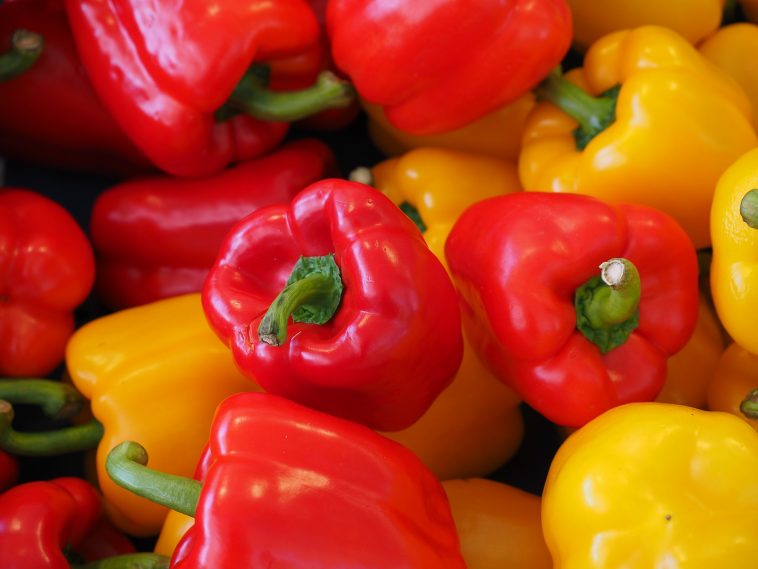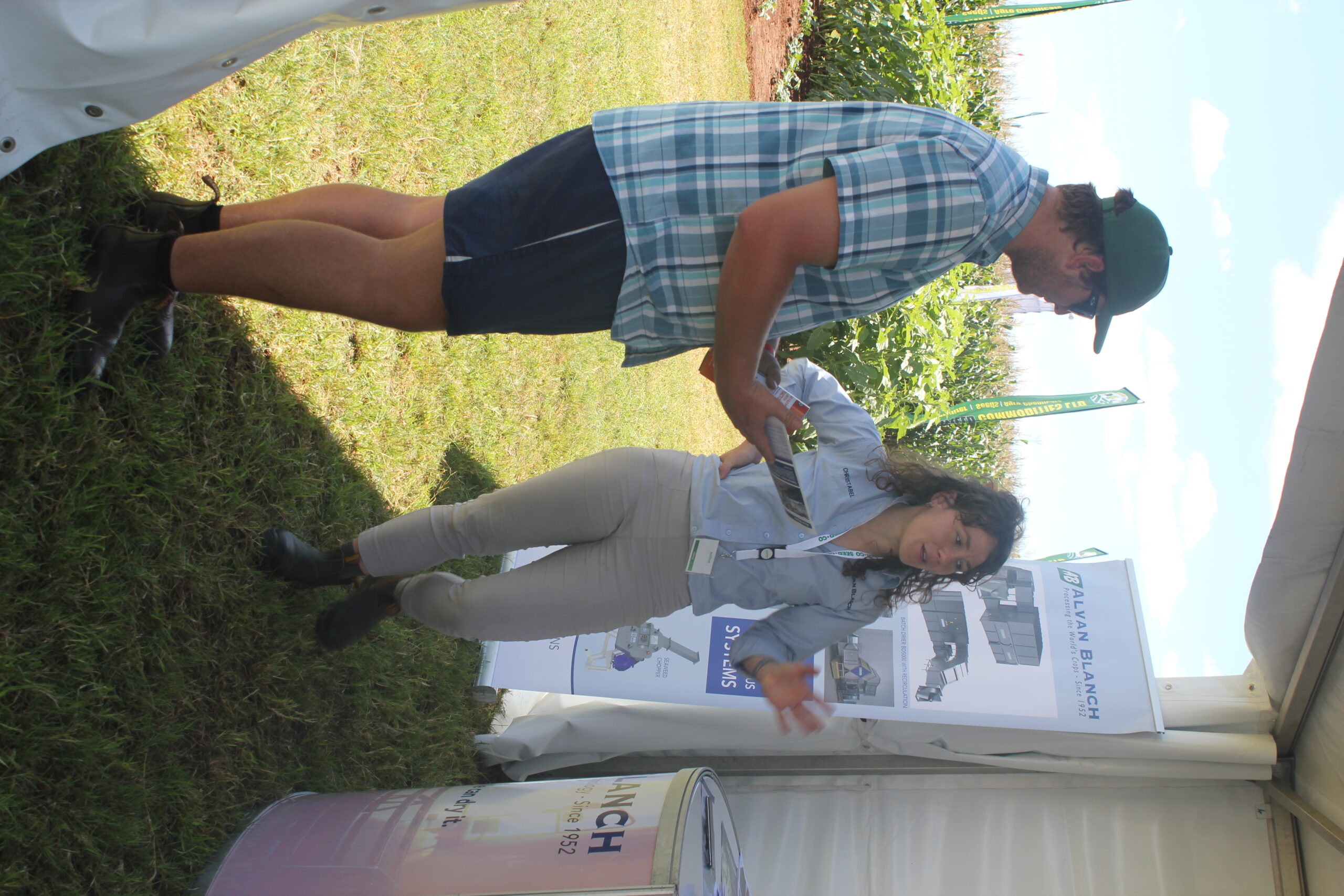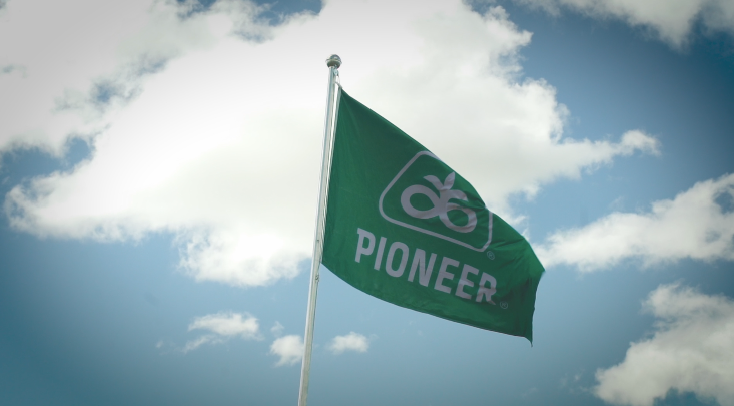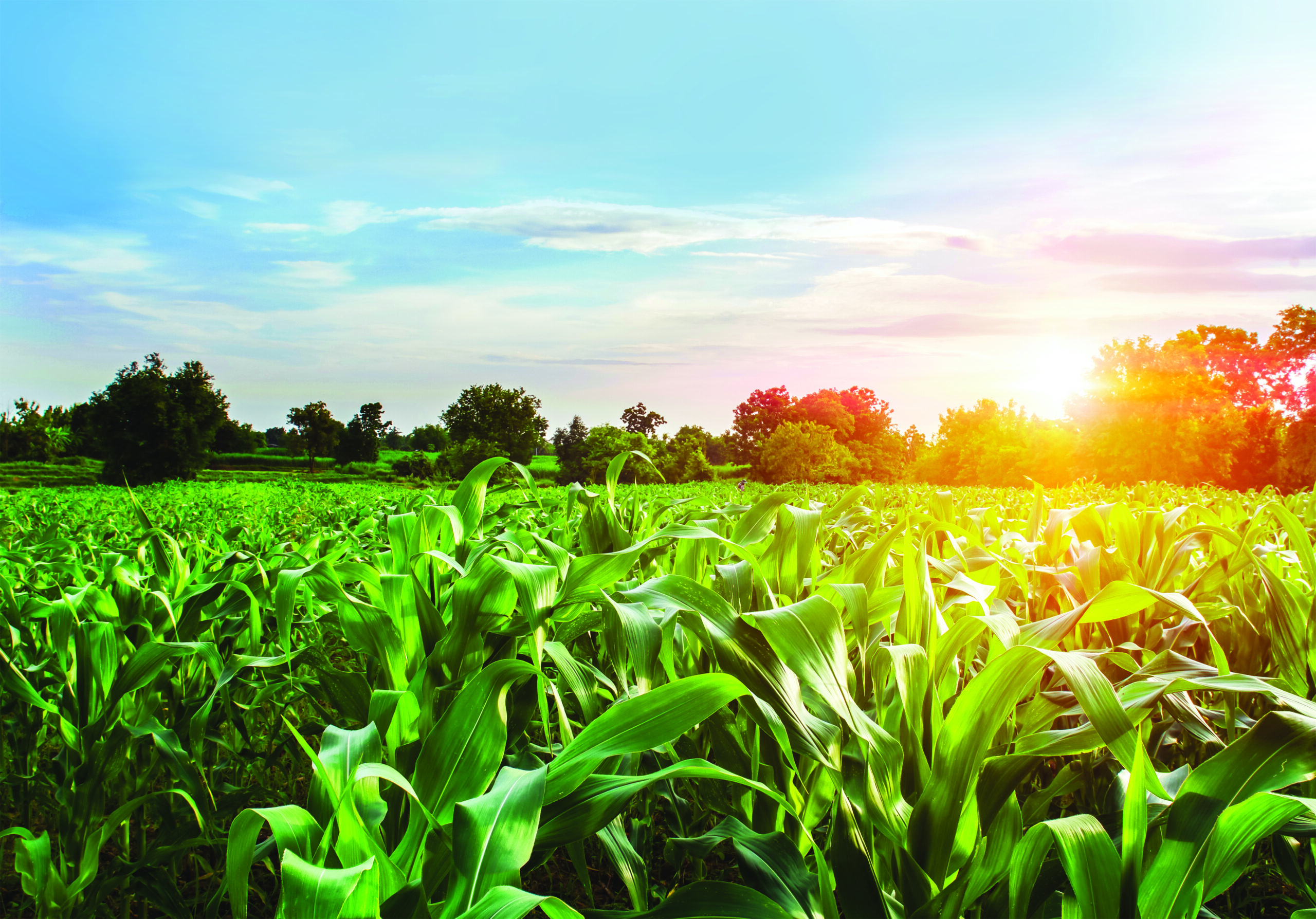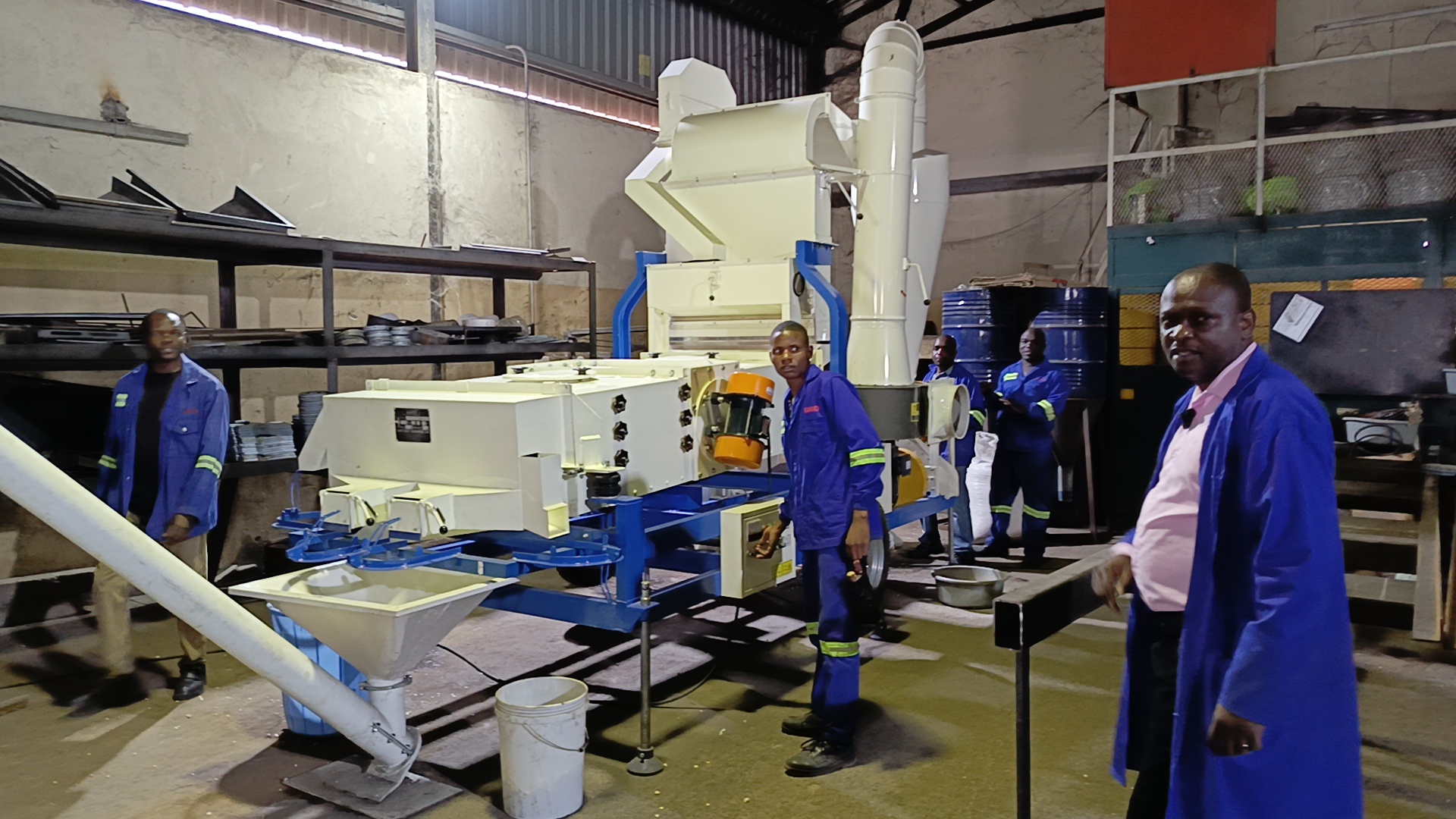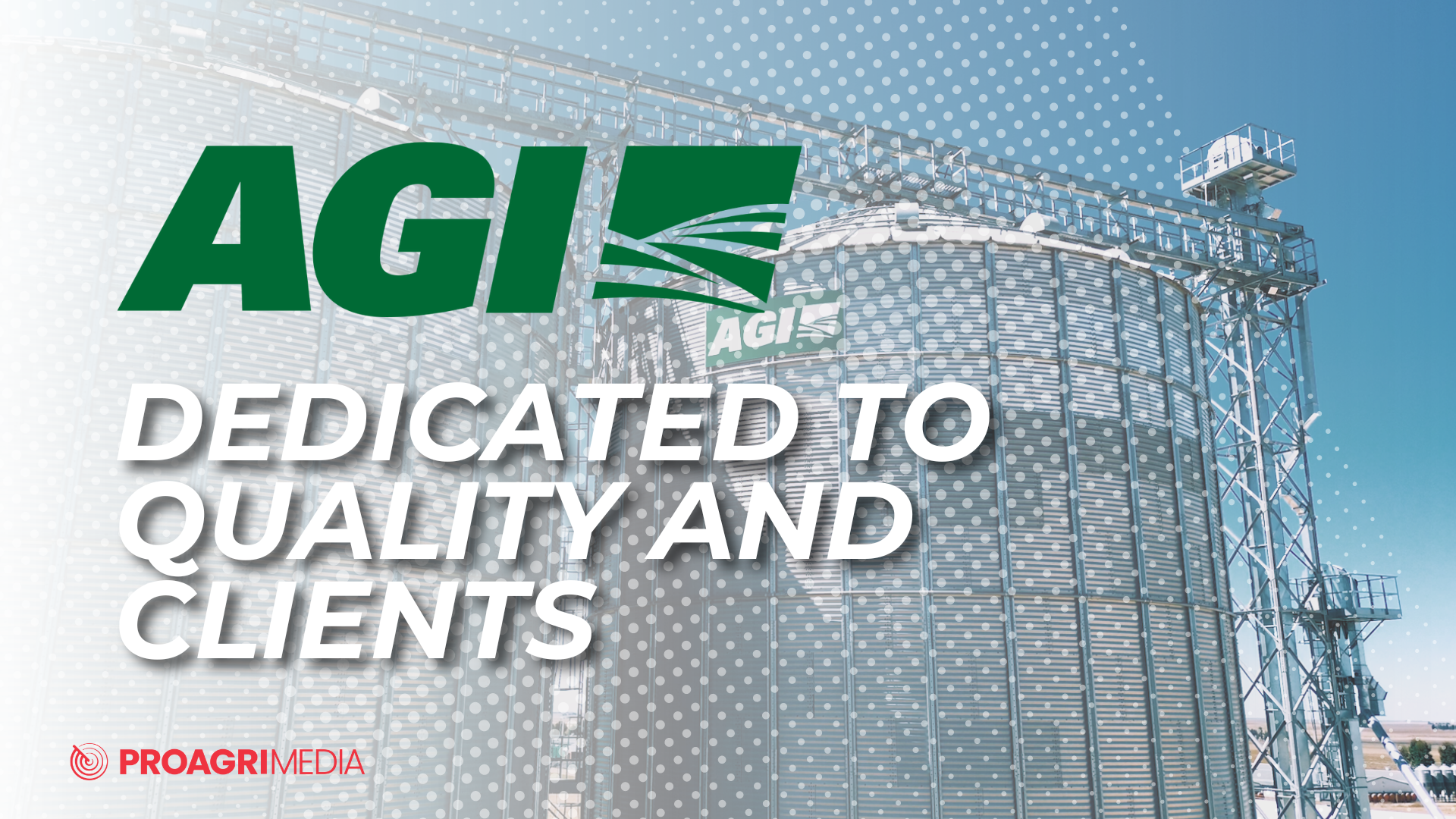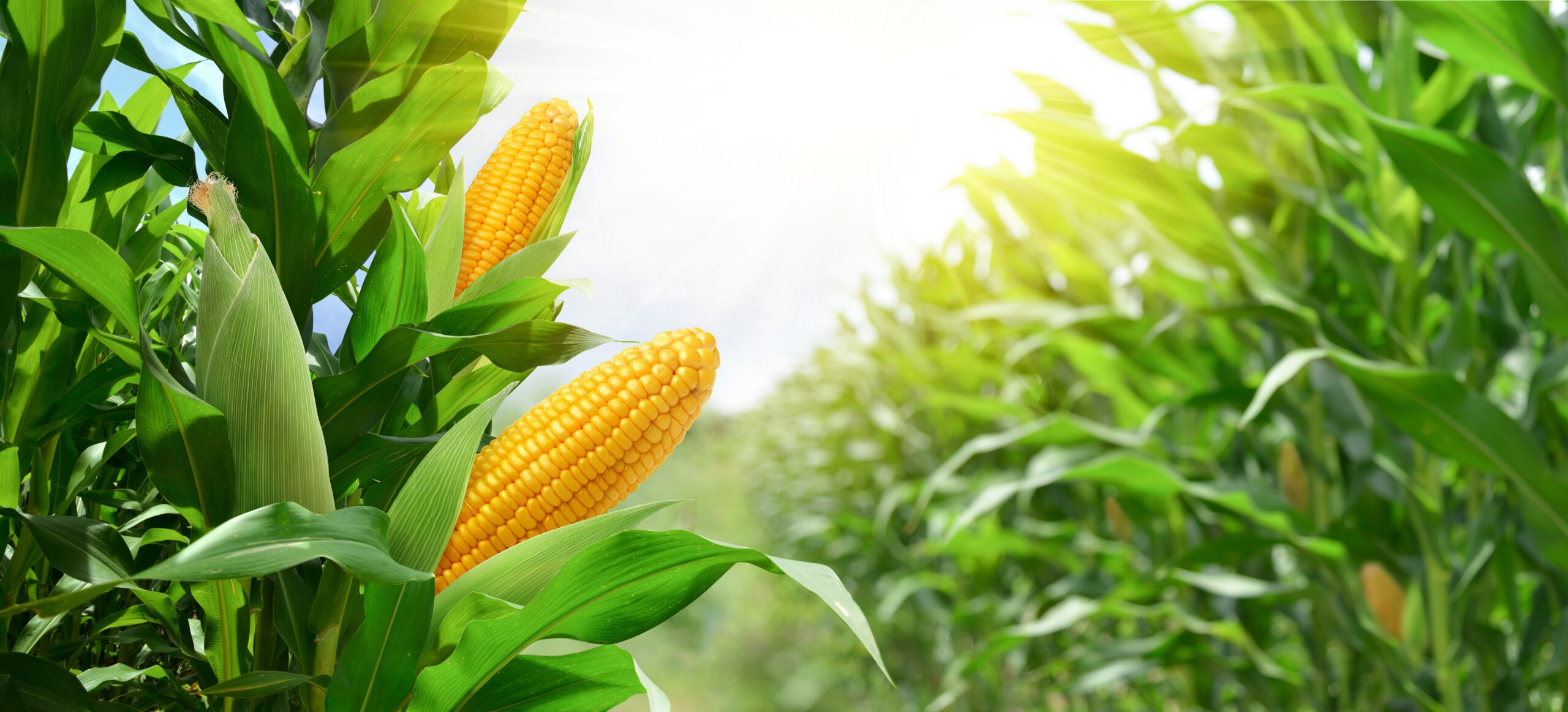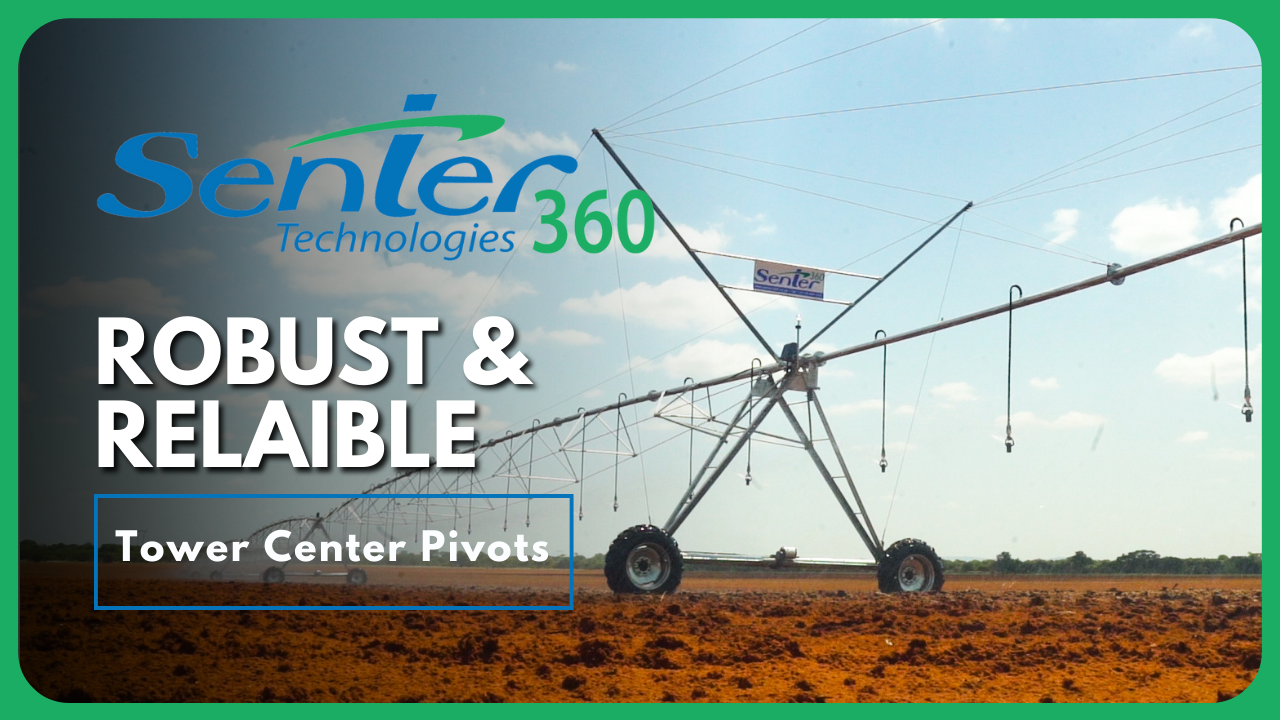Bell peppers can be preserved in the form of a sauce known as Salsa. Salsa is a spicy sauce that is served with meat and Mexican food. It is best served fresh, but can be frozen for later use. However, frozen salsa does not have the same consistency as the fresh product.
Peppers are chopped with tomatoes, onions, garlic, and spices such as fresh parsley, basil, or oregano. Interesting varieties can also be made by the addition of chilli and various fruits such as papaya and pineapple.
Harvesting of bell peppers
Bell peppers are harvested by hand into pails that are emptied into bulk bins for transport to the packaging/ processing site. The peppers should be harvested by cutting the fruit from the plant with a sharp knife or scissors, and not pulled or twisted as this can easily damage or uproot the plant. The pickers should be trained to minimise handling damage.

Process description.
The harvested peppers should be transported to the processing site or at least a shady location as soon as possible, since peppers are considerably more susceptible to water loss, sunscald and heat damage after picking than before.
The correct stage of maturity for harvesting depends on the use of the product. If full colour development is desired for an attractive display, the fruit is picked at >80% colouration. Otherwise, the fruit is picked once the mature green (full size) has been reached.
Peppers ripen and colour more evenly in greenhouses compared to those cultivated in the field. Field peppers harvested in a green or nonuniform coloured state can be exposed to ethylene gas during storage to promote uniform ripening and colouring, if so desired.

Bell pepper harvesting. (Image Source: sandyshore.ca)
Inspection and sorting of fresh bell peppers
Only the best quality peppers should be used for the fresh market while minor defects and non-uniformities can be tolerated for slicing and dicing purposes. Selection criteria include uniformity in colour, maturity, shape and size, and freedom of defects. Any pepper showing signs of mechanical or insect damage, diseases, rot, or sunscald is discarded.
Washing of bell peppers
The harvested peppers are washed in a water bath assisted with soft rotating brushes or by gentle jet sprays.
Preparation of peppers and other salsa ingredients
The peppers are topped and tailed using sharp stainless steel knives. The seed cavity is stripped from seeds and white flesh. The peppers are then finely chopped. Although green peppers are most commonly used, variety of coloured peppers may also be used.
The remaining ingredients, herbs and spices are also cleaned, peeled (where necessary) and finely chopped. All the chopped ingredients are mixed together.

Refrigerated storage of pepper salsa (optional)
The salsa has a storage life of five days in the refrigerator. Suitable packaging would be plastic tubs with sealable lids or glass bottles with screw-on caps.

Bell peppers on the plant.
Frozen storage of pepper salsa (optional)
Salsa may be preserved by freezing, although the defrosted product does not have the same consistency as the original fresh product. Salsa is filled into plastic tubs or bags, leaving a small headspace for expansion during freezing. The package is sealed and placed in a freezer. Rapid freezing as performed by forced air freezers deliver a better quality product, but still freezing is also acceptable.
The product should be kept at – 18 °C to ensure a storage life of several months.

Bell pepper plants. (Image Source: arvintejarat.co)
Labelling of packaging (optional)
The packaging material or containers that are not pre-printed, are labelled and coded with the necessary information.
Various labelling and coding systems are available, depending on the type of label and container used.
Published with acknowledgement to the ARC Agricultural Engineering for the use of their manuals. Visit www.arc.agric.za for more information.

